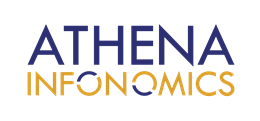-
Containment Collection and transport Treatment Disposal / Reuse
-
Capacity building Finance Information Education and Communication / Behavior Change Communication Infrastructure Policy and processes Technology
-
Access to sanitary toilets Better governance and planning Change in disease burden Collection efficiency of sanitation system Cost recovery Environmental sustainability through reuse, resource recovery, conservation Equity and social inclusion Private sector engagement Quantity of waste safely treated Sanitation practices of the supply side Sanitation practices of the end user
-
TSM - Arab Requirements for Wastewater Treatment Facilities - ??????? ??????? ?????? ????????? ??????? ?????? ?????? ???? ????? ?????
Technical Sustainable Management TSM (Arab) is a Quality Management System managed by the following stakeholders:- ACWUA-WANT programme as financing and supervision of the TSM-Arab implementation.- Arab Countries Water Utilities Association (ACWUA)- TSM-Arab Task Force of ACWUA members quality management system)- Holding Company for Water and Wastewater (HCWW) as consultant of the programme- German International Cooperation GIZ.TSM (Arab) requirements aims at the development of Water and Wastewater facilities in the memberscountries of ACWUA to reach conformity to the Arabian regulations, codes, laws and standards in fieldsof management of the following activities:- Human resources,- Occupational Health and Safety,- Operation,- Maintenance and- Quality Assurance.
-
Understanding and addressing the exposure of workers, the public and the environment to pathogens during pit emptying - Water Research Commission Proj...
On-site sanitation is a desirable option in many contexts and various on-site technologies have been rolled out in South Africa, as well as other countries, as a basic standard of adequate sanitation. Most on-site sanitationsystems accumulate sludge in a collection chamber which eventually becomes full and needs to beemptied; the system can then be recommissioned for another cycle of use. If, in the process ofemptying the collection chamber, workers or the public are exposed to the pathogens in the sludgeor the environment becomes contaminated with sludge, then the most fundamental purpose of thesanitation system has been compromised. It is therefore of paramount importance to public andenvironmental health that the removal of sludge from on-site systems be conducted in such a waythat the risk of humans or the environment coming into contact with sludge is reduced as far aspossible, and that stringent measures are put in place for decontamination should exposure occur.This document is the product of a study of the pathways of potential exposure to sludge during pitemptying and ways to reduce risks which was conducted by Partners in Development, withcollaboration from the University of KwaZulu-Natal, on behalf of the Water Research Commission.
-
Waste emptying, collection and transport - Technical drawings and further documents developed in the context of GIZ’s Water Sector Reform Programme
The following documents focus on waste emptying, collection and transport and were all developed in the context of GIZ’s Water Sector Reform Programme in Kenya.You will find the following documents for download here:- Technical drawing of 3 wheeler unit for the transportation of dry human excreta waste
-
Waste to Energy Plant in Nashik Brochure - SNUSP II
Like many cities in India, the city of Nashik is also struggling with citywide Solid Waste and Wastewater management. Therefore, there is an urgent need for an integrated approach to solid waste and wastewater management on the one hand and control of Green House Gas (GHG) emissions on the other hand. The Waste to Energy Project in Nashik is one such solution through co-processing of septage (faecal sludge) with organic solid waste and generating energy to create a sustainable business model.Content:How the plant works: Technical approachFacts & FiguresBusiness Model
-
Anaerobic Digestion of Biowaste in Developing Countries - Practical Information and Case Studies
Research on anaerobic digestion solutions for low - and middle-income countries has shown that there is a wealth of knowledge and experience with small- and medium-scale digesters built in rural areas where manure from a few cattle and some household waste is used as feedstock. However, anaerobic digestion still seems to play a negligible role as a treatment option in urban settings for organic yard, kitchen or market waste. The use of this technology has recently become popular on a medium- and large-scale in industrialised countries, often using sophisticated technology with automated and mechanised control systems. However, transferring this rather advanced technology to a low -income country without consideration of local conditions and without specific adaptations will be predisposed to failure.This book therefore aims to compile existing and recently generated knowledge on issues of anaerobic digestion of organic solid waste at small- and medium-scale with special consideration of low - and middle-income country conditions. The book is divided into two parts; Part 1 focussing on practical information related to anaerobic digestion and biogas production, and Part 2 presenting selected case studies from around the world.
-
Comparative Expenses of Sanitation Options in Rapid onset Emergencies
Several major donors are now looking for “value for money” in all WaSH emergency programmes. Therefore in order to justify the cost of Oxfam’s selected latrine design not only should initial construction cost be considered but also the on- going operation & maintenance costs to ensure that we are providing “value for money” in phase of emergency and the long run.In saying this, value for money should not only look at construction, operation and maintenance costs as many other aspects such as suitability of design for each phase of an emergency, soil conditions, environmental factors and acceptability of design must also be a major factor.This document hopes to outline various basic costs of a selection of design options as well as calculate operation and maintenance costs over a period of 2 years. In addition to this the document will also look at the suitability of those selected designs during the same time frame.















